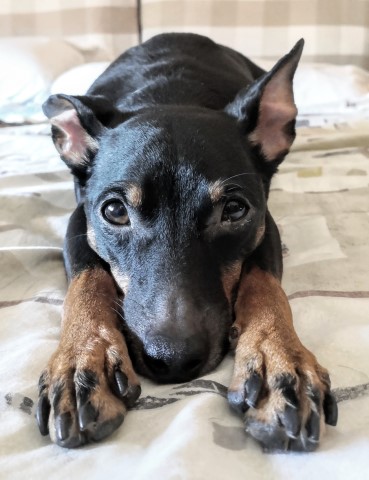Have you ever looked at your floors when the sun was coming in through a window and thought to yourself: “Look at all that fur. Is that normal?”. You are not alone; many pet owners have questions around hair shedding. All dogs and cats, as well as people shed hair. When living with pets though you quickly come to notice that dogs and cats have a lot of hair. That is a true statement, as humans we tend to have one hair growing out of one hair follicle. Dogs and cats can have several hairs growing out of one follicle. Most dogs have an undercoat and as the name implies it helps with thermoregulation in cold weather. Guard hairs are furthest away from the body and are what you’re touching as you pet your dog or cat. We cannot forget the third hair type, whiskers on the face and along the eyelids.
1
Dogs and cats can shed undercoats going from fall to winter and then from winter to spring. Going into the winter undercoats will be thicker to retain heat while going into spring undercoats will be less dense to help keep animals cool. The shedding of hair is a normal biological function. The normal hair coat is smooth with all hairs lying in the same direction. There should be a sheen or shine to the coat as well. Each hair follicle (and associated hair) exits through the skin and therefore skin abnormalities can impact haircoat feel and appearance. Scaling and flaking skin along with brittle or dull hair may indicate an abnormality.
The skin is the largest organ of the body and requires protein, energy, vitamins, and minerals for normal function. Skin provides a protective barrier against environmental elements that effect the health dogs and cats. Nutrition plays an important role in supporting skin health as nutrient deficiencies are associated with skin abnormalities.
2
A good quality diet is important for supporting skin and coat health. When selecting a diet for your dog or cat it is recommended that you choose a complete feed as per AAFCO (Association of American Feed Control Officials) definitions. It is also recommended to pay attention to the type of fat in the diet. The essential fatty acids (EFAs) omega-3 and omega-6 are requirements for skin health.
3 Sources of omega-3 fatty acids in dog and cat diets include nut and plant oils, flaxseed and fish. Meat from land-based animals are the primary source of omega-6 fatty acids.
4 These ingredients will be listed in the ingredient decks found on the bags of dog and cat food products.
1 Hunter, T., Yuill, C."Grooming and Coat Care for Your Cat.” vca_corporate, vcahospitals.com/know-your-pet/grooming-and-coat-care-for-your-cat.
2 Watson, T. "Diet and Skin Disease in Dogs and Cats". Journal of Nutrition,1998..
3 Conference Proceedings: British Small Anim Vet Assoc BSAVA (2017). The Role of Nutrition in Dermatology
4 Arford, K. (2020 May 29). "Fish Oil for Dogs". American Kennel Club.(https://www.akc.org/expert-advice/nutrition/fish-oil-for-dogs/
